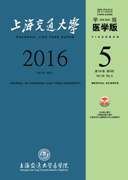Objective To investigate the correlation between reproductive health (climacteric symptoms, prostate symptoms, and sexual function) and anxiety and depression in males aged 20-85 years in Shanghai communities. Methods The multi-stage cluster random sampling was used and 1 366 eligible respondents were randomly enrolled during Nov. 2013 to Jan. 2014 from 29 sub-districts in Huangpu District, Jiading District, Putuo District, and PuDong New District in Shanghai. Symptomatic Inventory for Screening Late Onset Hypogonadism in Males (SILOH), Aging Male Symptoms Scale (AMS), International Prostate Symptom Score (IPSS), National Institutes of Health Chronic Prostatitis Symptom Index (NIH-CPSI), International Index of Erectile Function-5 (IIEF-5), Premature Ejaculation Diagnostic Tool (PEDT), Chinese Index of Sexual Function for Premature Ejaculation-5 (CIPE-5), Self-rating Anxiety Scale (SAS), and Self-rating Depression Scale(SDS) were used to investigate climacteric symptoms, prostate symptoms, sexual function, and mental health. Those over 40 years old were surveyed with SILOH and AMS. The correlation between male reproductive health and anxiety and depression was analyzed. Results Compared with the normal SAS(or SDS) group, scores of SILOH, AMS, IPSS, NIH-CPSI, IIEF-5, PEDT, and CIPE-5 in the SAS(or SDS) positive group were less satisfactory and the positive rate of male reproductive problems was higher. The differences were statistically significant. The positive groups in SILOH, AMS, IPSS, NIH-CPSI, IIEF-5, PEDT, and CIPE-5 had less satisfactory scores of SAS and SDS and higher positive rate of anxiety and depression as compared with the negative groups. The differences were statistically significant. Conclusion Male reproductive health interacts with mental problems such as anxiety and depression, which results in worse male reproductive health, while reproductive health problems are apt to cause anxiety and depression.

